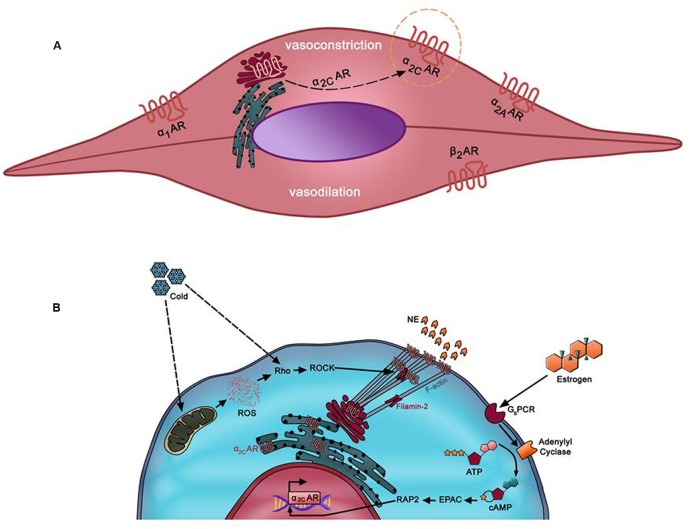FIGURE 1.
(A) Predominant adrenergic receptors in arteriolar vascular smooth muscle cells (VSMC). β2AR mediates mediates vasodilation of small microvessels. Vasoconstriction of these vessels occurs via α1-AR, α2A-AR, and α2C-AR. Whereas α1-, α2A-, and β2-ARs in these cells are localized at the cell surface, α2C-AR (in dotted orange circle) is uniquely trapped intracellularly (mostly trans-Golgi). However, it can be mobilized to the membrane by various stimuli such as cold temperatures. α2C-AR mediates cold-induced vasoconstriction, which when exacerbated may lead to Raynaud’s phenomenon (RP). (B) Mechanism of cold-induced mobilization of α2C-AR. In cutaneous arteriolar SMCs, a decrease in temperature is sensed by the mitochondria, which then releases reactive oxygen species (ROS). ROS, in turn, activates the Rho/ROCK pathway. Subsequent cytoskeletal rearrangements involving F-actin and filamin-2 promote mobilization of α2C-AR from the endoplasmic reticulum/Golgi to the cell surface.

